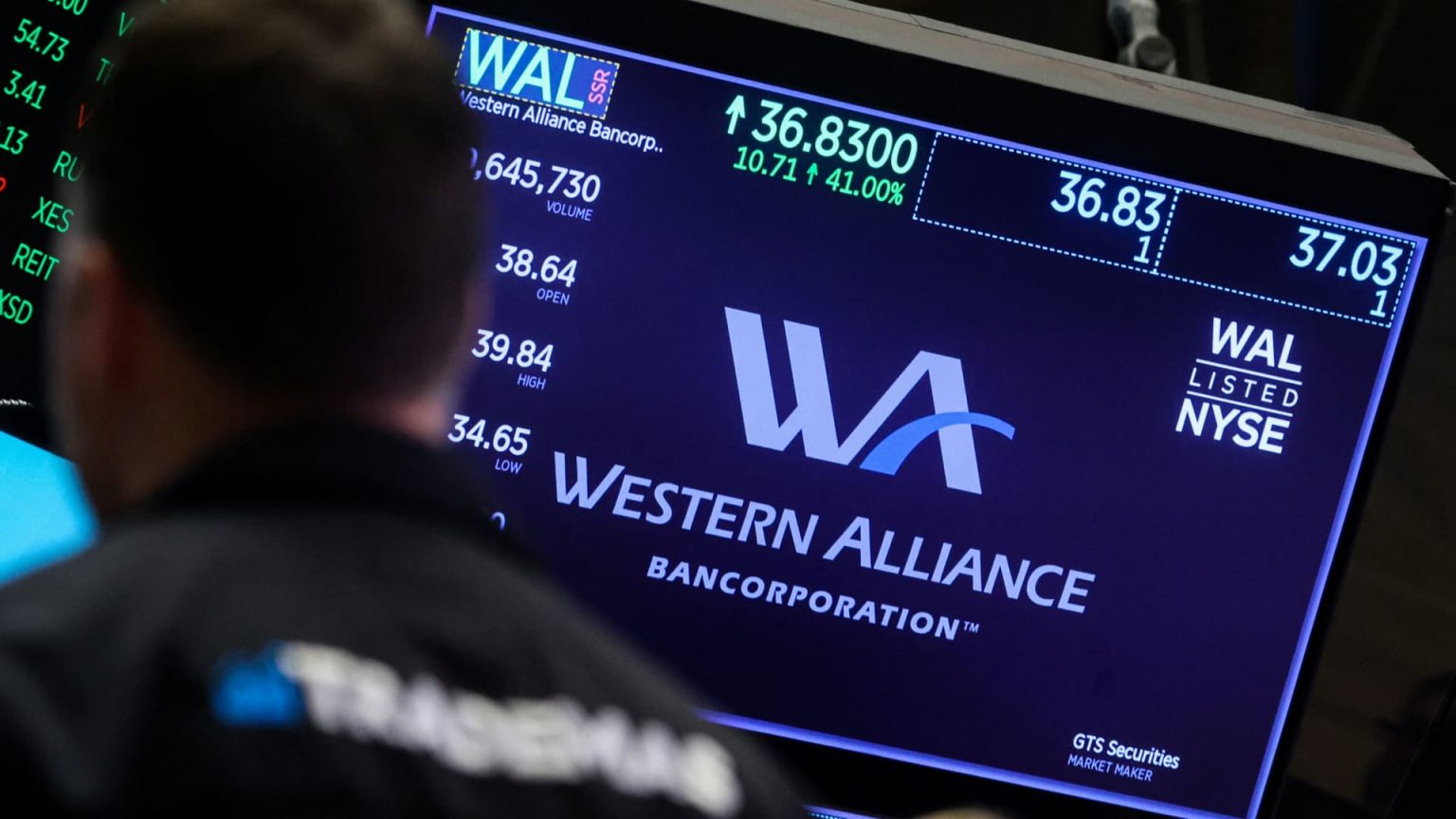Western Alliance has put the spring’s regional banking crisis in the rearview mirror and will be able to sustain its recent rally, according to JPMorgan. Analyst Steven Alexopoulos hiked his price target on Western Alliance to $60 per share from $53, saying in a note to clients Thursday that the stock has “material upside” after the bank’s second-quarter earnings report revealed rebounding fundamentals. “The company showed signs that, not only is the worst of the March banking turmoil in the rearview mirror, but that the company’s deposit growth in the quarter was also fueled in part by about a third of deposits that left during the events of March which have now returned to the bank,” Alexopoulos wrote. The bank reported $3.5 billion of deposit growth during the second quarter and said it expected to add an additional $4 billion in deposits by the end of the year. Investors appeared to cheer that result even though earnings per share of $1.96 was a tick below the average estimate of $1.97, according to FactSet’s StreetAccount. Shares of the bank rose more than 7% Wednesday after the report was released. WAL 5D mountain Shares of Western Alliance rose sharply on Wednesday. But even with that rally, the stock is still down about 37% from where it ended in February, before the regional banking crisis. Shares fell more than 50% in March and then dipped briefly below $20 per share in early May after the failure of First Republic . That means the stock still has room to run, according to JPMorgan. The firm’s new price target represents upside of nearly 30% from where Western Alliance’s shares closed Wednesday. “Despite WAL shares outperforming in response to the quarter (as well as over the past couple of months), WAL’s 2023e implied cost of equity remains very elevated relative to peers (18.0% vs. peers at 12.7%) even with 2Q23 likely representing the low point for [net interest income/net interest margin]. As a result, we continue to see this stock as remaining materially mis-priced,” Alexopoulos wrote. — CNBC’s Michael Bloom contributed to this report.
Read the full article here




